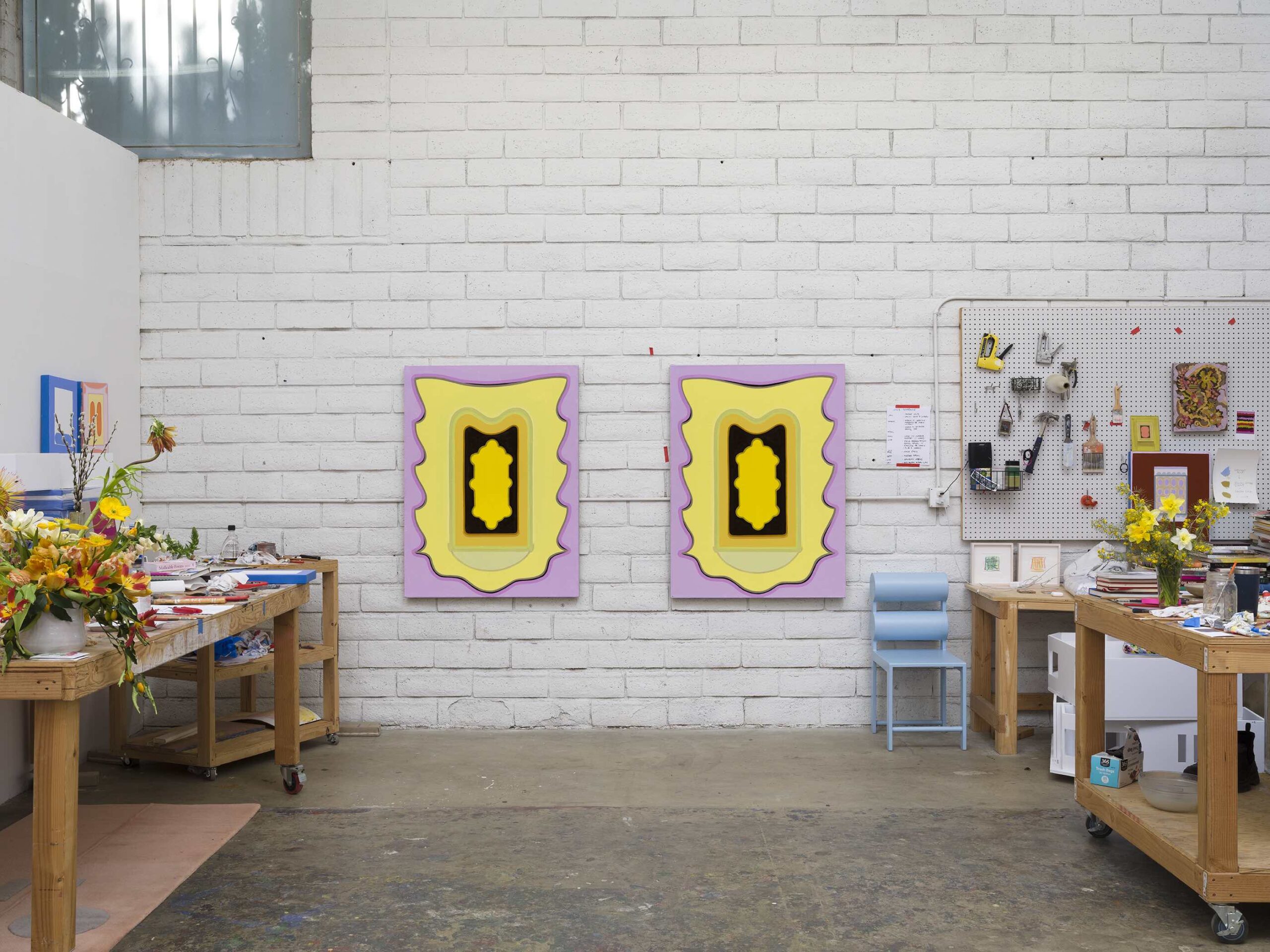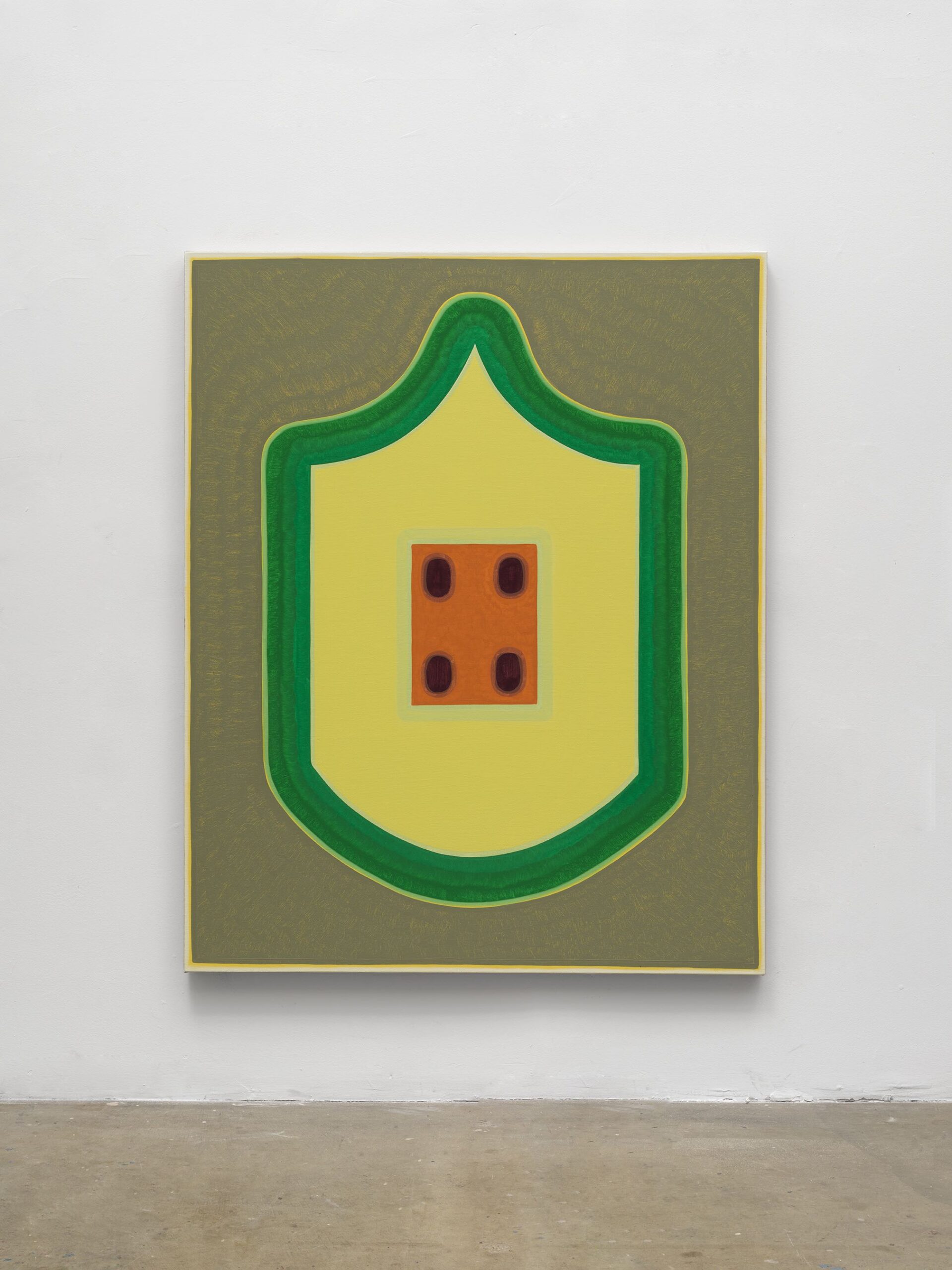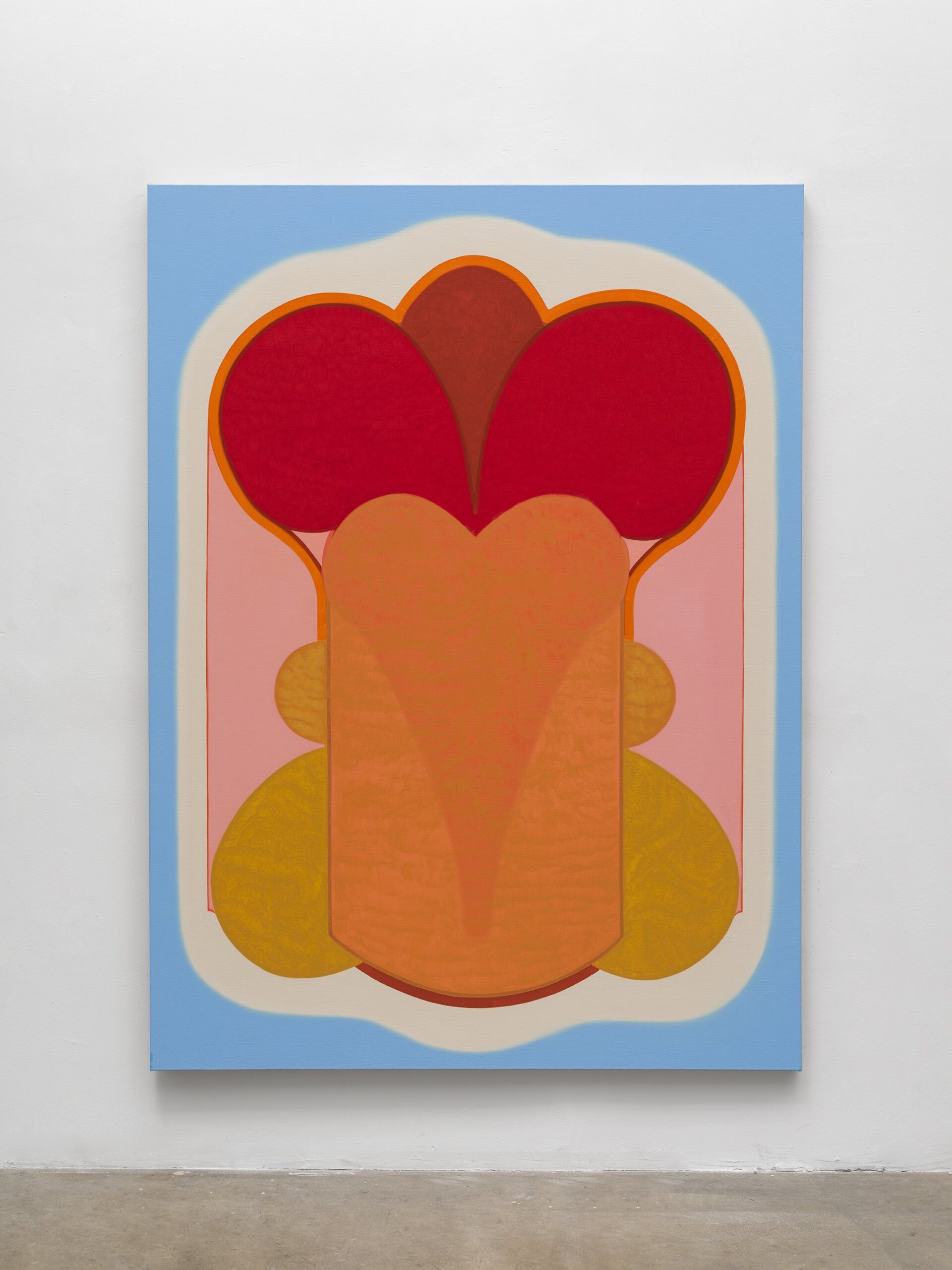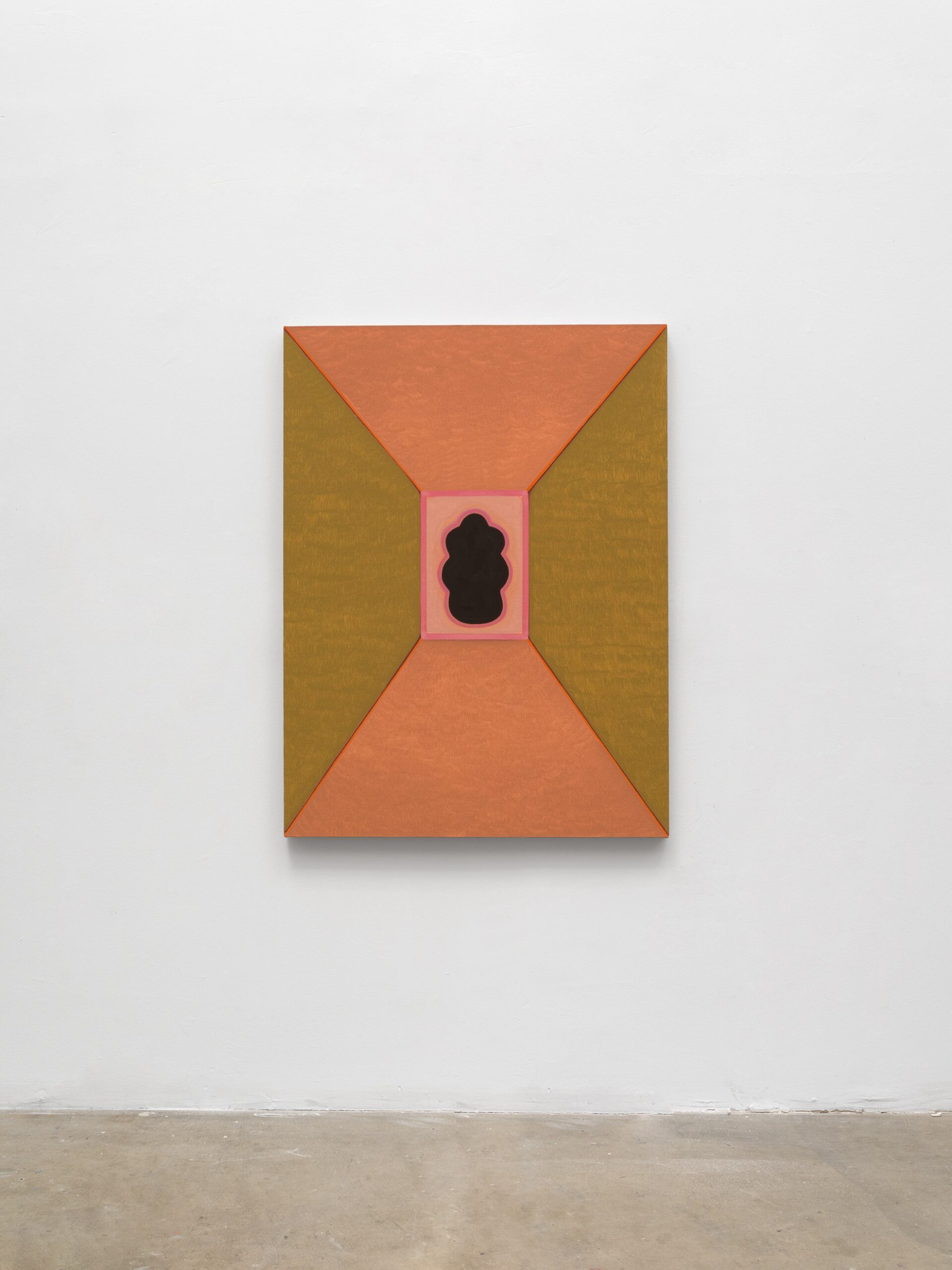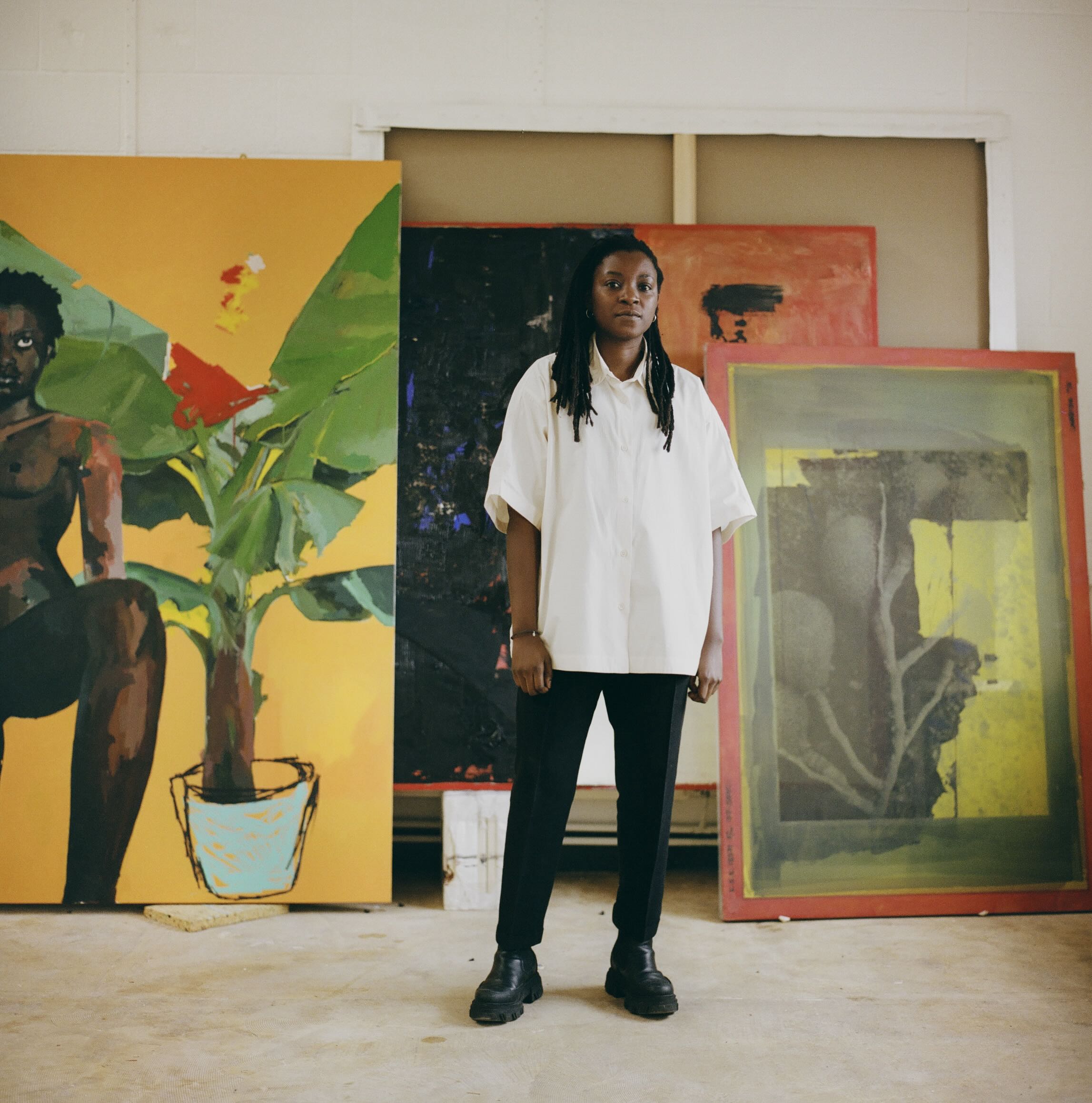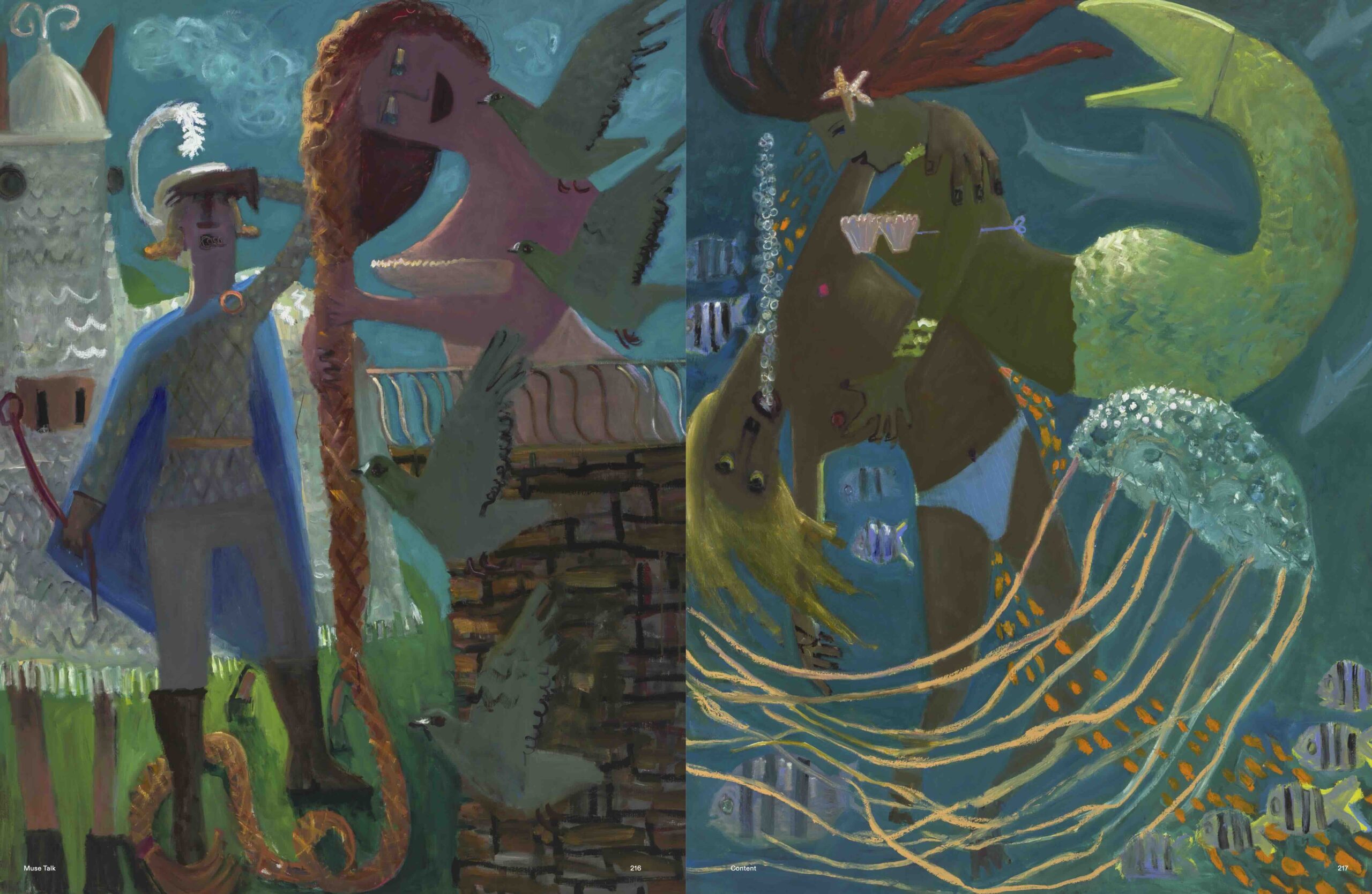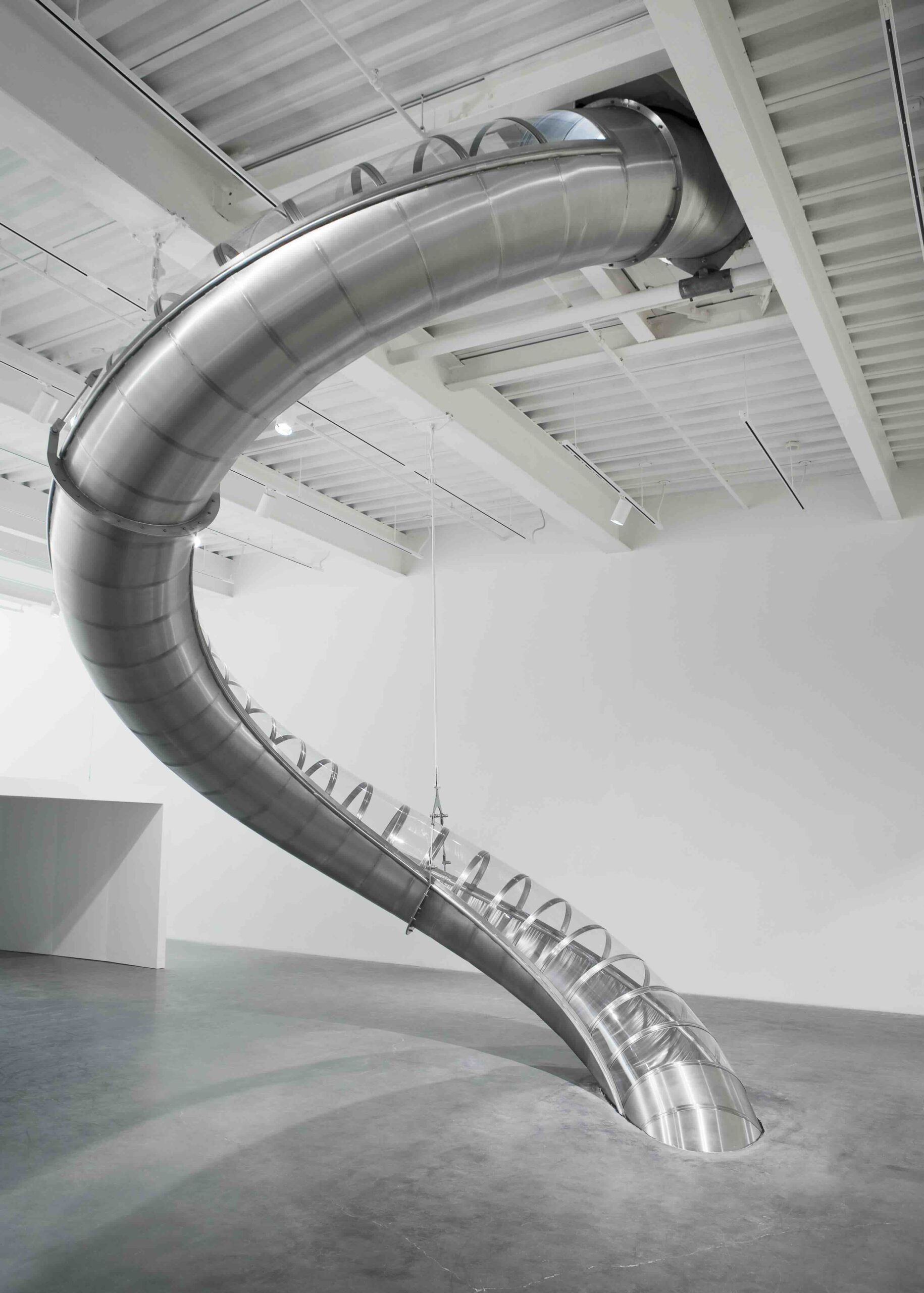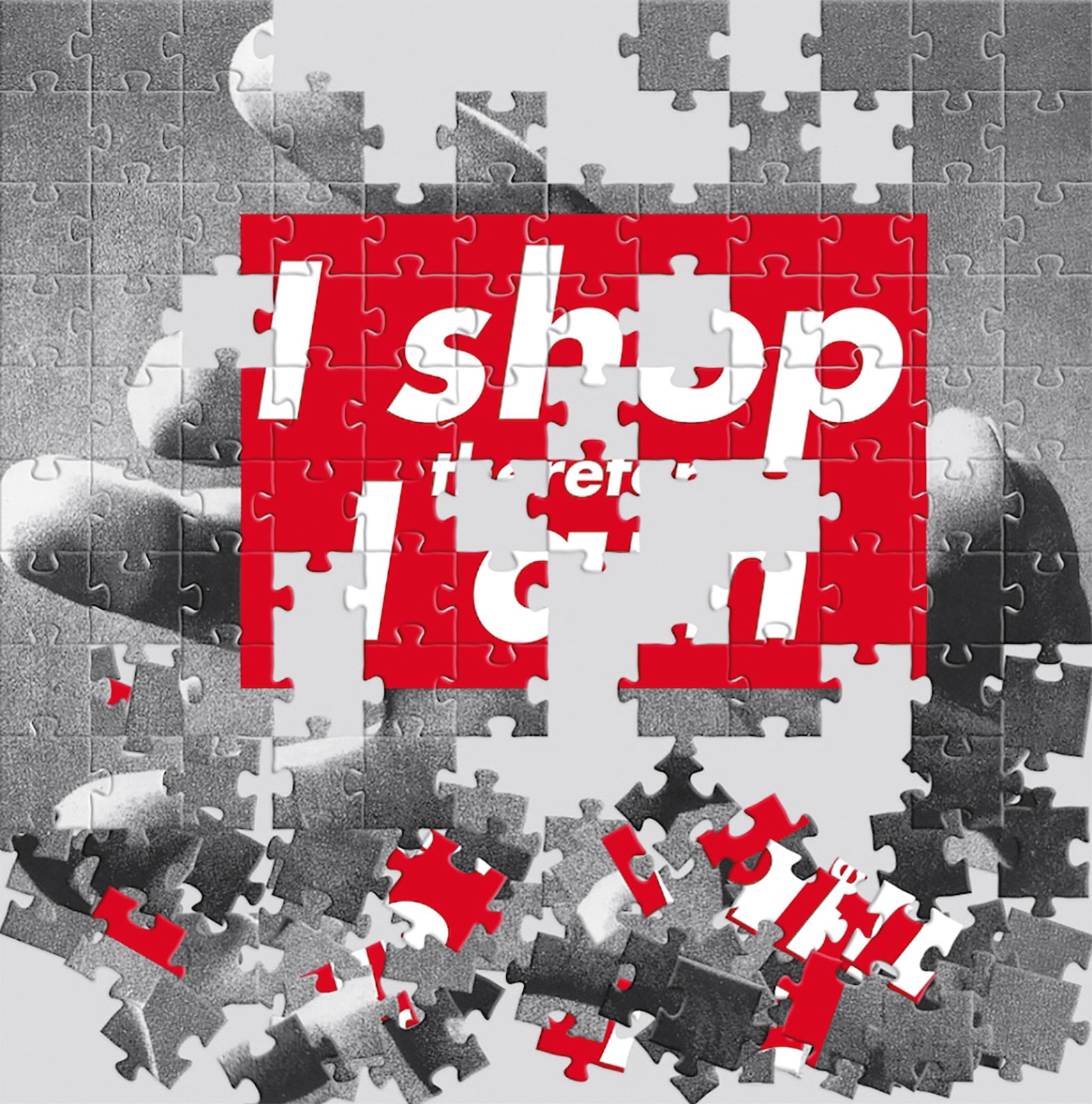LILY STOCKMAN IN CONVERSATION WITH MADDALENA IODICE
Lily Stockman’s visual vocabulary is rooted in her earliest experiences of nature when she and her sisters would just be out playing in the fields or learning plants common and Latin names with their horticulturist grandmother. It was through this repertoire of words that she first gained a greater sense of the world around her. A natural world she has then articulated in her paintings, vivid impressions of the experience of being within, and at one, with the natural world. Stockman’s work is impregnated with a vivid sensibility expressed by both content and form, which building upon the psychological impression of the early American modernists and abstractionists is infused with the gestural mastery and minutia she learnt in Mongolia studying traditional Buddhist Thangkas painting, and later on in India, where she focused on Mughal miniature. Such a dense research allows her to transmute what was once a physical experience or a shared memory in a voluptuous synesthetic description. The biomorphic visual quality of her geometric abstractions subtly reminds us that somehow there is always an embryo, a bulb or a bud before life… Lily Stockman brings everything back to a poetic origin where we are not different from a cobalt bluebird or a scarlet Camellia, she reminds us about the eternal connection of everything.
MI Looking around us it feels like there is a conversation happening between these paintings and the gallery architecture [Massimo de Carlo, Londra]…
LS I think this show was certainly the most I’ve ever painted for an architecture. The paintings are in concert with the space.
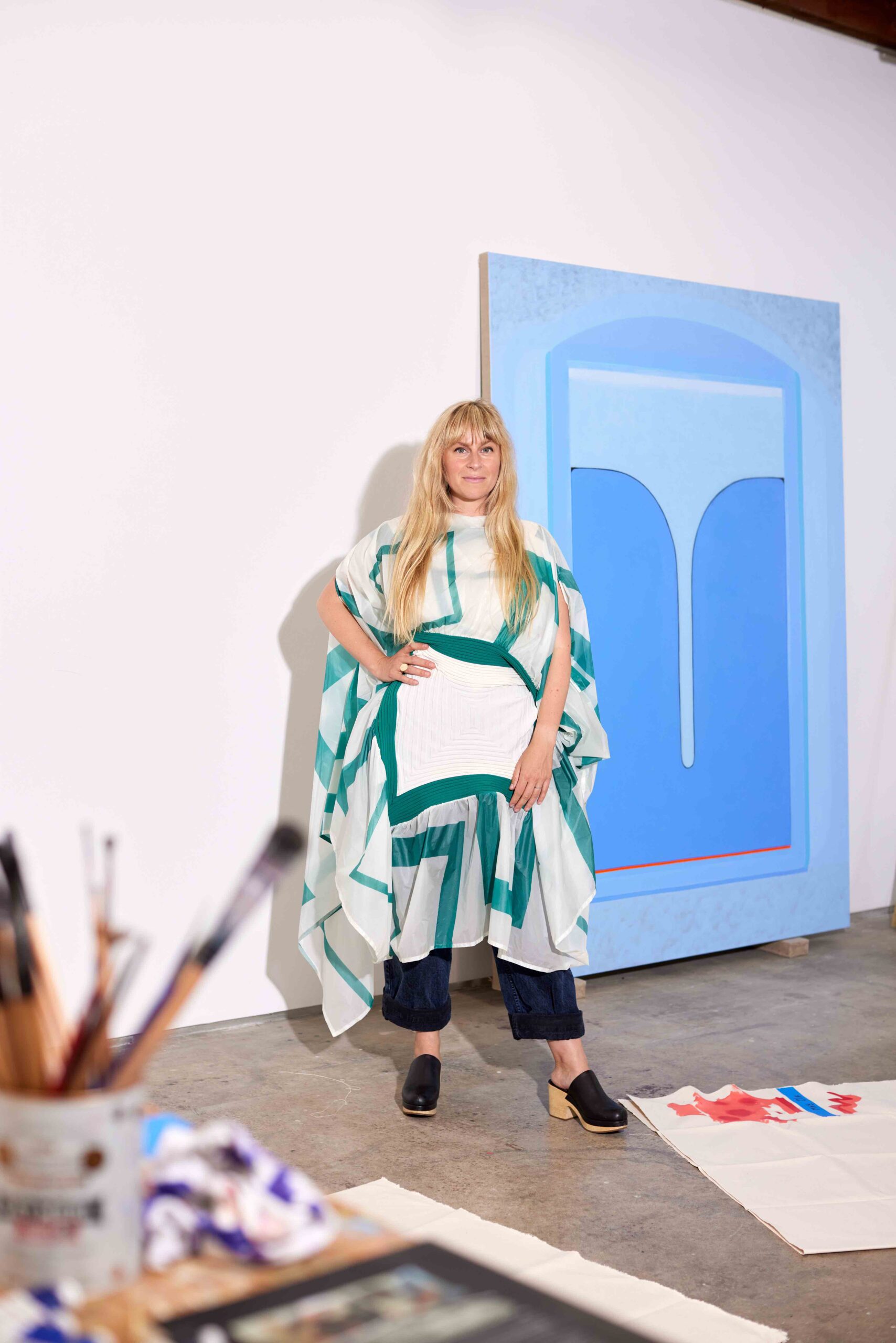
“I became aware that the paintings are so voluptuous and the reading could be very feminist or kind of biological or sexual […], but itʼs more coming out of the physiology of flowers or the experience of being a body in nature.”
MI How did you approach space? Did you know it already?
LS The gallery’s team made me a foam core model, and then I had a bunch of videos of walkthroughs of the space and also a little card with the paint color on it. And it’s so funny because in the photographs, it seemed like this kind of minty bright yellow green on the walls was gray instead, by the LA standards in crazy sunshine, but then the color is correct for the atmosphere and the Northern European light here.
MI It’s incredible how light nuances change from place to place.
LS You know, the famous paint company, Farrow & Ball Paint? It’s a famous English paint company that produces very expensive paint. When they expanded to North America, they had to deal with a huge number of returns from California because the colors they produced didn’t look right in that atmosphere. So then they came up with a California collection that was just slightly different.
MI Talking light, was there a specific impulse or spark that initiated this series of work?
LS That’s a great question. The mirrors. I can’t think of any other gallery that has mirrors built into the wall. So thinking about how to use them to my advantage as well as reading The Waves by Virginia Woolf was central to the impulse generating the series. In Woolf’s book this whole concept of reflection and refraction is very present. It also manifests on the surface of the paint when the light bounces off the gesso and through the underpainting. I’m fascinated by the way light moves and how you can catch glimpses of yourself in the painting. This also goes into the Western art historical canon of Jan Van Eyck and the mirroring of the artist. So there are all of these little visual puns and easter eggs in the show that, as a spectator, you don’t necessarily have to notice to appreciate.
MI The cover of The Waves by Virginia Woolf was originally painted by her sister Vanessa Bell. Their relationship unfolded as a special and beautiful example of creative exchange. Is there an anecdote related to the relationship you have with your sisters, which somehow inspired the series?
LS My youngest sister Grier did her thesis on Virginia Woolf and as I started to work on this show I called her but she wasn’t picking up the phone so I called my mom and said, Do you remember when you went to London with Grier to go listen to the special recording of Virginia Woolf? She said, Oh, yes, I remember so vividly hearing her voice! And I said But mom I thought the story went that you went all the way to London, all the way to the British Library to hear the recording, and Grier had this special recommendation letter from the head of the Brown University English Department, but once you got there you had to wait outside because your name wasn’t in the letter, so Grier went in a little carrel where an archivist with white gloves took out this precious original recording of Virginia Woolf reading and played it for her in the soundproof carrel. She laughed and said Actually, come to think of it, I guess that’s right… I don’t think they’d let me in, I *didn’t* hear Virginia Woolf’s voice, did I! My sister called me back later and set the record straight, You’re both wrong; mom and I just went to the British Library and I googled “Virginia Woolf recording reading” and listened to an audio clip. Just on Youtube or something. It was so funny, we all had very different versions of the event… The shared memory of the experience made me realize how that impressionistic strata of collective memory was the perfect way to interact with Virginia Woolf. What could be more Woolfian than that!
MI Reading some of your recent interviews I was particularly captivated by these lines where you talk about the pressure of the brush on the canvas and say you can see where I exhale or take a breath in there. Art truly is an embodied practice. I know you work with different canvas sizes and just quite recently started to work on bigger dimensions. How did it feel for your body and how has it influenced the way you do converse with the painting surface?
LS I think the two different sizes create two totally different painting and looking experiences. In relation to the small ones, I should mention when I was in college I spent a semester in Mongolia studying very traditional Buddhist Thangkas painting from this incredible painter named Badam. Later on, before graduating school, I lived in India and did a formal apprenticeship in Mughal miniature painting. When doing miniatures you’re sitting on the floor, the painting is the size of a ledger, and you have to relax your whole body to make slight and tiny movements. I remember watching Ajay, my teacher, and it was almost like watching someone playing an instrument like the violin or the piano. There was this beautiful musical movement just in the way his hands moved. So my small paintings are kind of a very intimate, quiet, minute physical activity. The big ones though, it’s like a workout. They involve a much bigger, athletic gesture.
MI Primitive shapes, soft curves, harmony of colors, repetition and camouflage. It is interesting to observe how your visual grammar unfolds from one series to the other and opens up to new nuances. Indeed, with the artwork New Mother you are explicitly addressing motherhood for the first time.
LS Yes, I remember thinking, Should I call it New Mother or should I call it something else? If there hadn’t been Lara and Sam [directors at Massimo De Carlo London] with their new babies, I don’t think I would have called it that. But there was some sort of kinship with the women at the gallery. My youngest child is one and a half now, so I’m kind of out of the woods with all the challenges and exhaustion of being a new mother, and I was thinking of these two women while I was making the show.
Read the full interview on Muse September Issue 62.
